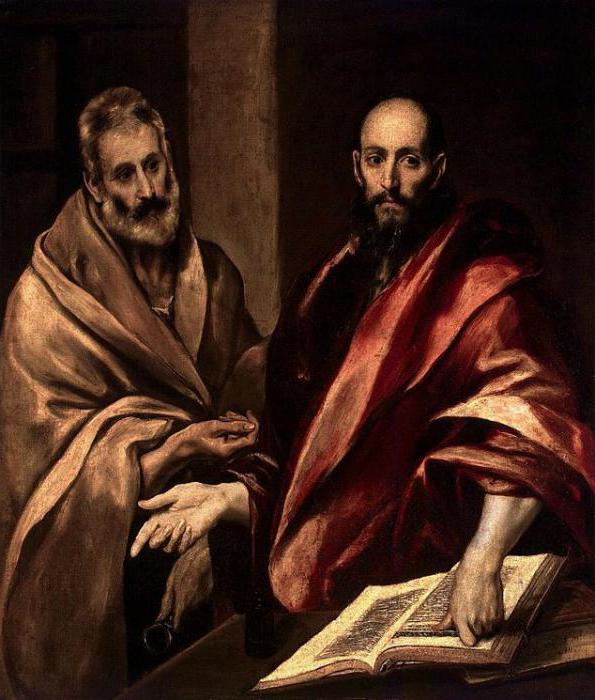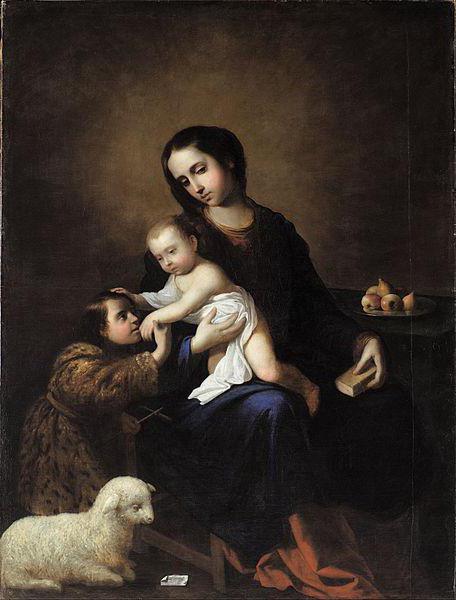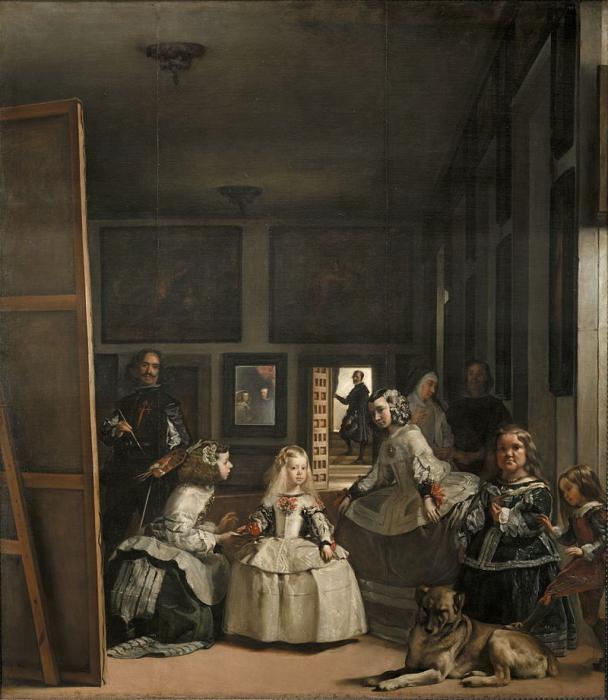Great Spanish artists in their works touched on topics that concern every person, so their names have remained for centuries. Starting with El Greco, nine such masters who lived from the 16th to the 20th century can be distinguished. The highest flowering is the 17th century. Otherwise, it is also called Golden. This is a baroque period.
Sixteenth century
The first to glorify the Spanish school was the Greek Domenico Teotocopoulos (1541-1614), who was nicknamed El Greco in Spain. In those days, bonfires over heretics often burned. Therefore, secular topics were hardly touched. Easel and fresco painting are varieties of illustrations for the Holy Scriptures. But even here one should be very careful. Traditional interpretations were required.

El Greco combines religious themes with amazing color and beauty that precedes the appearance of Baroque. One of his masterpieces, “The Apostles Peter and Paul” (1582-592), is kept in Russia. It depicts the simple illiterate fisherman Peter and the creator of the whole Christian doctrine, a highly educated Paul, naturally, with the Bible. In the first centuries, Christianity won all hearts with its love for people, mercy and simplicity - it was enough only to believe, and any person, educated and not, poor or rich, became a Christian. Spanish artists learned a lot from the painter, who had a unique style associated with eye disease. However, for a long period his painting was forgotten and rediscovered after three centuries.
Baroque - Golden Age
Catholicism is as powerful as nowhere else; moreover, it represents a powerful and formidable force that requires a person to put to death carnal desires and joys and completely immerse himself in religious rituals. Spanish artists such as Jose Ribera (1591-1652), Francisco Zurbaran (1598-1664), Diego Velazquez (1599-1660) and Bartolomeo Murillo (1617-1682) are the brightest representatives of this period. They are familiar with the works of Caravaggio, who has a great influence on them, not with their still lifes, but with their understanding of what death is and how closely it comes into contact with life.
Spanish painters Ribera and Zurbaran
This association is somewhat arbitrary. The painting of Jose Ribera (1591-1652) is distinguished by themes related to martyrdom and naturalism in the depiction of the suffering of saints and heroes from mythology, as well as the sharp contrast of light and shadow. Francisco Zurbaran (1598-1664) creates his best paintings, painted with lyricism, in the 30s of the XVI century. In 1662, he wrote with tenderness, "Madonna and Child with John the Baptist."

The bright image of the baby, located in the center of a simple and natural composition, immediately attracts attention, like the delicate face of the Madonna, and the golden clothes of John who knelt, at whose feet there is a symbolic white sheep. The grown-up Christ will be the shepherd of a huge herd of those who believed in him. Zurbaran writes only from nature - this is his principle, using the contrast of deep shadows and strong light. Zurbaran was friends with the brilliant artist Diego Velazquez, who helped him with orders. Spanish artists sought to support each other.
Velazquez (1599-1660)
Initially, the Spanish artist Diego Velazquez, living in Seville, works a lot on genre scenes, as well as allegorical paintings. But acquaintance with Italian painting from the royal collection greatly changed his aesthetic views. He changes the color to soft silver and goes on to transparent tones. With great difficulty, he manages to get the place of the court painter. But King Philip IV immediately appreciated the gift of the young artist, and he subsequently created portraits of members of the royal family. The pinnacle of his work was two paintings, unsolved until now, until then many of the meanings laid in them by the artist. This is the “Menin” (1656), that is, the retinue of the courtiers under the heirs of the royal throne, and “Straights” (1658).

In the "Meninas" at first glance everything seems simple. In a large room are a young infante, surrounded by maids of honor, a bodyguard, two dwarfs, a dog and an artist. But behind the back of the painter on the wall is a mirror in which the king and queen are reflected. Whether the royal couple is in the room or not is one of the mysteries. There are many more, a huge article. And no answer is given a single answer.
From Francisco Goya to Salvador Dali
Born in Zaragoza, Goya (1746-1828) becomes the official court artist, but then loses this place and gets the position of vice director of the Academy of Fine Arts. In any capacity, Goya works a lot and quickly, creating cardboards for trellises, portraits, paints churches, and paints for the cathedral in Valencia. He works all his life hard and hard, changing as a master, moving from bright holiday compositions with rich colors to fast and sharp graphics, and if it is painting, then dark and gloomy.
The drawing school in Spain does not die, but the next Spanish artist, a great master, will appear in 1881. This is Picasso. Than his creativity is not noted. These are the “blue” and “pink” periods, and cubism, and surrealism, and pacifism. Behind all his works is a subtle irony and a desire to sell. And he knew how to draw. Creating portraits of his beloved during the cubist period, which were sold like hotcakes, he paints it for himself in the style of realism. And only after becoming a wealthy person, he began to allow himself to draw as he wants.
Laconic is his work Don Quixote (1955). The knight himself, his squire, horse, donkey and several windmills are depicted. Don Quixote is light, weightless, and Rocinante is almost a sack of bones. In contrast, Sancho on the left is a black heavy mass. And although both figures stand still, the figure is full of movement. The lines are energetic, catchy, full of humor.
The eccentric famous Spanish artist Salvador Dali. This person was selling everything. And paintings, and diaries, and books. He made himself a fortune thanks to the energetic help of his wife Elena Dyakonova, better known as Gala. She was both his muse and manager. Their union was very successful commercially.
Concluding this article on the topic of famous Spanish artists, I must say that they all had a bright personality like the sun of Spain.